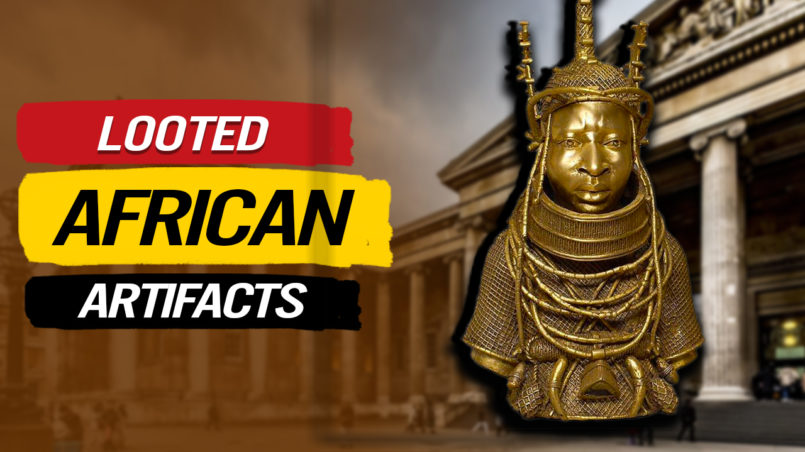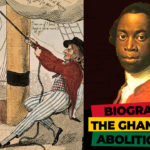Africa is well known for its rich culture and diversity and art is no exception. Art is a medium through which artists express and identify themselves. One can easily identify a particular ethnic group just by observing their display of artworks. African artworks have been in active practice for centuries. They serve as the windows into the cultural life of every society, and they carry substantial indicators that nurture a better understanding of the artistic ideas, expressions, and philosophical concerns of the society
Traditionally, arts were made to serve the needs of a particular people —be it physical, social, cultural, religious, or educational as compared to arts made for commercial purposes. Arts provided society with a sense of being, identity, pride, expression, and accomplishment.
These artworks took different shapes and forms. Some were made from wood carvings, metals, and others made from stones. Africa has lost a substantial amount of her artworks. Some couldn’t stand the test of time due to the materials used. Others were bought by foreign traders or even presented as gifts but over 90% of Africa’s artistic heritage which is housed outside the continent were plundered by colonial bandits.
These arts have been housed in European museums for decades. Not only have they contributed immensely to save modern European artists from artistic decay and boredom, but have also presented a new vitality to European museums and galleries bringing enormous economic gains.
Professor Frank Willet, the leading Africanist of his time noted “the greatest contribution Africa has made so far to the cultural heritage of mankind is its richly varied sculpture.”
African artworks inspired numerous leading European artists such as Pablo Picasso of the twentieth century, who was much admired as one of the greatest painters ever. Even though Picasso drew inspiration in African Art, he would still go on for a longtime to deny its very existence which was ironic for someone who owned a collection of African arts.
Picasso will later claim African Arts were pivotal to his art after he visited the Ethnographic Museum of the Trocadéro in Paris with another artist friend Andre Derain, which led to what he called Black period or African period.
He’ll later describe his experience, “And then I understood what painting really meant. It’s not an aesthetic process; it’s a form of magic that interposes itself between us and the hostile universe, a means of seizing power by imposing a form on our terrors as well as on our desires. That day I understood that I had found my path.”
This provided Picasso the creative inducement he needed to create works that shed all conventions and enabled him to surpass his artistic rivals
Even though Europeans emphasized Africans could not create works worthy of the term “art” and labeled African art with contemptuous descriptions in line with the usual colonial putdowns such as primitive, pagan, , and so on, they still borrowed heavily from its creative expertise to produce their own.
Insert a video preview of Didier Rykner, Managing Director, ‘La Tribune De L’art’ saying Africans didn’t know they were creating ‘art’ until Europeans said so.
It’s disheartening for someone who lacked the mental tendency to understand African arts to say Africans didn’t know what they were doing.
To the African artist, art is an expression of consciousness towards his environment rather than a mere visual representation. It embodies stories, culture, beliefs, and heritage. If you take a closer look at African artefacts, much of the time you’ll realize surface beauty was the least concentrated on.
Africa has lost a great deal of its history as these artifacts have for many centuries been forlorn captives of hijackers in foreign lands. The opportunity for the younger generation to learn and critically select the aspect of our culture with genuine values has been stripped away. One of major concerns of Africa today is how to overcome the feelings of inferiority. Most of our culture, language, values, and beliefs have been diluted because we are cut off from our ways and now struggling to adapt to a foreign culture.
As Kwame Nkrumah said, “Our history needs to be written as the history of our society, not as the story of European adventures. African history must be a mirror of that society, and the European contact must find its place in this history only as an African experience.”
Africa needs the artworks back. We need them back. African stories must be told by Africans.
Over the years we’ve had individual groups, institutions, activists, and artists calling for the return of these looted artifacts. We’ve also had chiefs, clans, and natives stating the basic property laws, that stolen or looted property should be returned to its rightful owner.
On February 28, 2019, Linden-Museum Stuttgart, Germany returned a Bible and whip belonging to Hendrick Witbooi to the Nama ethnic group in Namibia. On November 18, 2019, France returned a sword that originally belonged to Omar Saidou Tall an Islamic scholar and ruler in Senegal in the 19th century but the Bible and the whip weren’t the only items the French stole if I may use that word. According to Mr. Thiam, “They took everything, including his library, in Segou, and I hope that all our books that are now in France will be returned to us.” he told BBC Afrique.
As this might be seen as a window of returning thousands of looted artifacts back to Africa, efforts have proven very controversial. Some European museums argue that Africa doesn’t have the standard infrastructure to house these artifacts and it will be better for them to keep them. Meanwhile, The Bangwa Queen’s wooden carving which was taken by German colonialist Gustav Conrau in 1899 from the Bangwa people of Cameroon sold for a record $3.4 million at an auction in New York.
There’s no doubt that Europe’s interest in making money from these artifacts is their chief concern, rather than the idea of safekeeping, as they claim.
Some say it’s a political decision and museums are only custodians and cannot make decisions towards repatriations. There’s also been internal disputes amongst certain clans with regard to the rightful heir to receive these artifacts which have also presented the opportunity for European museums to request proof before handing them over.
The Victoria and Albert Museum in London has indicated that it was willing to return looted treasures to Ethiopia – on loan. Meaning the arts would be allowed in Ethiopian museums over some time and then returned.
The question is, Are we, Africans not the ones who are supposed to loan them to the Europeans?
I believe unification of Africa is long overdue. This is the time for us to put aside petty prejudices and sentiments against each other and focus on the greater good of all Africans. There’s a proverb that goes: when two brothers fight, a foreigner inherits the land. Amidst all the conflicts between certain clans and individuals battling for the right to ownership of these artefacts, I propose the establishment of African Union Museums for all Africans, fighting as a united body demanding for the return of the looted artifacts.
With a state of art equipment and proper record keeping systems in place, these structures would serve the purpose of preserving, showcasing, and promoting Africa’s rich culture and heritage. They would be strategically placed at vantage locations across the continent.
Their vast space would house thousands of looted artifacts retrieved from the Europeans which solves the problem of inadequate infrastructure, smuggling of artefacts back to Europe and disparities amongst clans. “African unity and solidarity should no longer be a dream. They must be expressed in decisions.” quoting Patrice Lumumba.
This among others things are some of the crucial efforts that foster unity. It’s time to walk the talk. These museums would bring both Africans within the continent and in the diaspora together and also attract foreign tourism thereby generating income for projects across the continent. Holding close to a million pieces of arts, I believe it’s going to be the biggest museum with the widest range of cultural artefacts in the world, and who wouldn’t love to see that?
The time has come for Africa’s unity to be realized.


